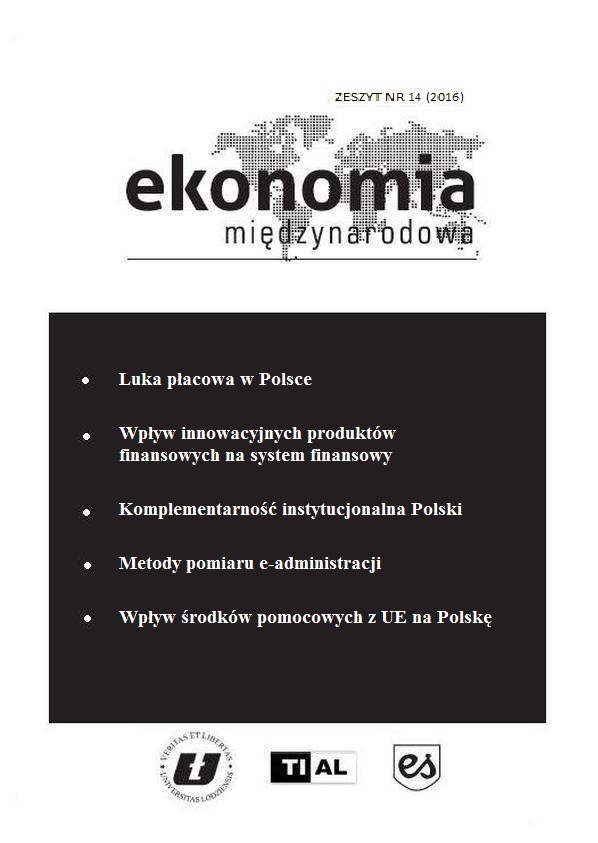Institutional Complementarity of Poland in Terms of Diversity of Capitalism
Institutional Complementarity of Poland in Terms of Diversity of Capitalism
Author(s): Maciej WysockiSubject(s): Economy, National Economy
Published by: Uniwersytet Łódzki - Wydział Ekonomiczno-Socjologiczny
Keywords: institutional complementarity; diversity of capitalism; cluster analysis; k-nearest neighbours method; k-mean method; principal component analysis
Summary/Abstract: Poland is one of the most significant examples of a transition country in Central and Eastern Europe. After 45 years of being a centrally planned economy Poland emerged at the end of the 1980’s a free-market economy. In 2004 Poland became a member of the European Union, which was another milestone in the transition process. Undoubtedly, institutions were a very important factor in Poland’s economic transition. It seems that the horizon of 25 years since the fall of communism has created a decent prospect to evaluate the balance of economic transition in terms of the quality of institutions. However, comparative studies do not analyse institutions separately, but consider them together in an institutional framework.The purpose of this essay is to examine the scope of the institutional complementarity of Poland in terms of Diversity of Capitalism. The main thesis of the article is that after more than two decades since the first stage of the economic transition, and one decade after joining the European Union, Poland’s institutional complementarity is, in general, at a satisfactory level. However, there is a very low level of institutional complementarity in the case of interaction between the labour market and the financial system. Furthermore, the Polish model of capitalism seems to be quite different from other countries from the peer group of transition economies (for example the Czech Republic or Hungary). The research method which was used in this essay includes statistical methods (in particular the K-Nearest Neighbours Method, K-Mean Method and Principal Component Analysis).
Journal: Ekonomia Międzynarodowa
- Issue Year: 2016
- Issue No: 14
- Page Range: 133-157
- Page Count: 25
- Language: English

